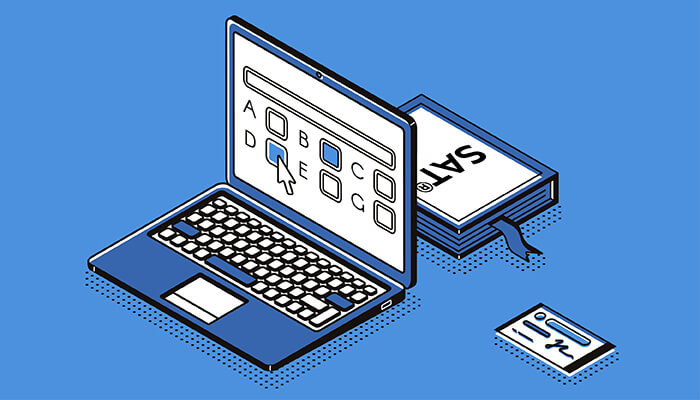On March 9th, 2024, College Board rolled out its first ever digital SAT. The SAT, albeit updated, has been in use since its creation in 1926 (take a look here to find some questions from the first ever SAT). The exam was invented by Princeton’s Carl C. Brigham, a psychology professor and a member of an increasingly discredited and unscientific movement called eugenics. After Brigham’s death and numerous updates, the SAT became the paper test that students up to the graduating class of 2024 have taken. However, for the class of 2025 and beyond, the SAT has shifted online, bringing about many changes from the original paper SAT. Let’s break down the differences!
Here are some facts that most people know about the paper SAT:
- It lasted for three hours (not including breaks)
- It had three sections: Reading, Writing and Language, and Math, and the math section was split up into Math (no calculator) and Math (with calculator).
- It included long and short reading passages.
- It was timed by a proctor (a teacher in the school).
- All of the tests were the same for each person.
- Reference sheets for SAT Math were included in the paper exam booklet.
- Students could not use a graphing calculator on the entire Math section.
Many parts of the paper SAT have changed drastically. Here are some facts about the digital SAT:
- It will be administered on a digital device through an application called Bluebook.
- It will last for a total of two hours and 14 minutes.
- It will consist of two sections: Reading and Writing, and Math (test takers can use a calculator for the entire math section).
- It will adapt its questions depending on how you do, creating a unique and individualized test for each person.
- Its reading passages will be shorter and more concise.
- Students can use digital tools like a countdown clock, a graphing calculator, highlighters, and bookmarks.
The purpose of this drastic change into a digital SAT is to allow students to have a smoother test taking experience and to make the exam more relevant by using digital devices. However, while the tests have major differences, the SAT will still be graded on a 1600 scale, measure a student’s college readiness, and be administered only in schools with designated testing centers.
Thankfully, Khan Academy and many other online resources have adapted their practice problems to match those of the digital SAT. You can read “Where to Find Digital SAT Practice Tests: Complete List” by Meilee Bridges from PrepScholar or “SAT Practice and Preparation” by College Board to find resources to help you study for the new digital SAT!
Sources:
- https://www.pbs.org/wgbh/pages/frontline/shows/sats/where/timeline.html
- https://blog.collegeboard.org/everything-you-need-know-about-digital-sat
- https://blog.prepscholar.com/sat-changes-2023-2024#:~:text=All%20US%20and%20international%20SAT,check%20out%20our%20complete%20guide.
- https://files.eric.ed.gov/fulltext/ED562571.pdf







